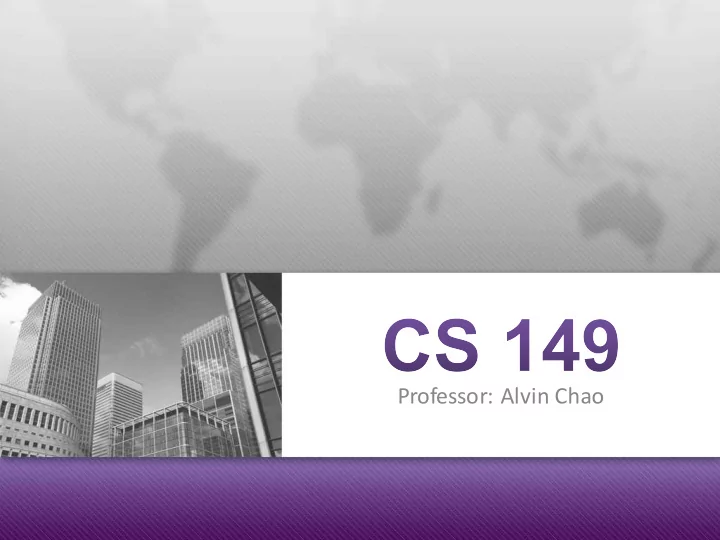

Professor: Alvin Chao
CS149 – Intro to Classes and Objects
• When you define a class in Java, you are defining a new reference type. For example, the class below represents Die objects. Each object has its own attributes (data) and methods (code).
• 1. What are the attributes of Die? What are the methods? • 2. In the class diagram, what do the - and + symbols represent? • 3. Notice how the roll method refers to face, yet that variable is not declared in the method. Why does that work? What does the roll method change, in terms of the Die object? • 4. Let’s say we are in another class with a main method, and we want to declare a Die object named lucky. What would that declaration statement look like?
5. What would the statement look like to instantiate the Die object? (Hint: use new) • 6. When we instantiate an object, we are actually calling a constructor . This method has no return • type and the same name as the class itself. What does the Die constructor do? 7. What's wrong with the following code fragment? • int value; value = Die.getFace(); 8. We've decided to add a method to the Die class that will allow us to change the face value • directly. What's wrong with the following implementation? /** * Sets the current face value of the die. * * @paramnewFace The new face value of the die */ public static void setFace(int newFace) { face = newFace; }
• Unified Modeling Language (UML) provides a way of graphically illustrating a class’s design, independent of the programming language.
9. What are the attributes and methods of Circle, and what is their visibility? • 10. Based on Model 1 and Model 2, what is typically public and what is typically private? • 11. How would you declare a variable named unit that is a Circle object? How would you instantiate • a Circle with radius 1 and assign it to unit? 12. Write a main method that creates a circle object with radius 2 and displays its area and • circumference on the screen. 13. Draw the contents of memory at the end of your main method. • 14. Write the complete code for the Circle class. When the value of radius is set, make sure it is not • negative; if it is, set the radius to zero. Recall that the area of a circle is πr 2 and the circumference is 2πr.
• Acknowledgements Parts of this activity are based on materials developed by Chris Mayfield and Nathan Sprague. </end>
Recommend
More recommend